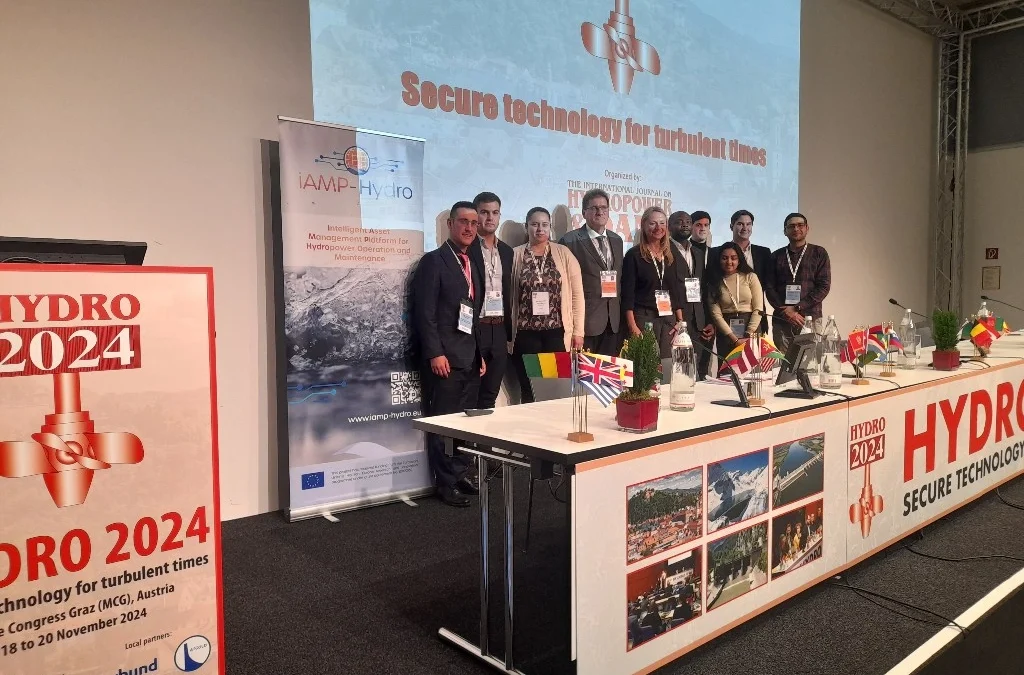CARTIF participated last week in the International Conference HYDRO 2024, one of the most important events in the field of hydropower and renewable energy, which took place in Graz (Austria). Sergio Rodríguez Carro, researcher of the Energy division, was in charge of leading session 17, entitled ‘Digital solutions for the operation and maintenance of existing hydropower plants’, where he presented the latest advances of the D-HYDROFLEX project.
The D-HYDROFLEX project, funded by the European Union under the HORIZON programme, focuses on the modernisation of hydropower plants through the integration of hybrid systems combining hydropower generation, solar energy and hydrogen storage. This approach aims to increase grids flexibility, optimise the use of renewable resources and reduce greenhouse gas emissions.
Innovation in two hybridisation scenarios
During his presentation, Sergio Rodríguez highlighted two main scenarios evaluated in the framework of the project:
- Scenario 1: small hydropower plant located at a drinking water treatment plant. This model uses a Pump as Turbine (PaT) turbine to recover energy from a continuous and stable flow, optimising the use of resources in the industrial sector.
- Scenario 2: medium-scale hydropower plant in a dry tropical climate, equipped with a Francis turbine. This system allows energy to be stored and produced during periods of a low water demand or grid injection restrictions.
Both scenarios integrate photovoltaic systems and a hydrogen system consisting of electrolysis, compression and storage, offering solutions adapted to different context and scales.
Results and benefits
The results presented by the CARTIF researcher demonstrated that hybridisation allows for a more efficient management of the energy generated, with a positive economic and environmental impact. In particular, it was highlighted that:
- Larger scale plants generate greater economic benefits through better resource efficiency.
- The flexibility provided by hydrogen storage improves the stability and efficiency of energy systems.
- The combination of solar energy and hydrogen allows solutions to be tailored to the specific needs of each installation.
A new proposal for the future
The D-HYDROFLEX project was presented as a clear example of how research and technological innovation can contribute to the energy transition in Europe. Through this kind of initiatives, CARTIF reaffirms its commitment to sustainable development and its leadership in advanced technological solutions. Sergio Rodríguez’s participation in HYDRO 2024 highlights CARTIF’s key role in building a greener and more efficient future.
The event
The HYDRO 2024 event, organised at the Messe Congress Gaz in Austria from 18-20 November, brought together more than 1,200 delegates from 75 different countries to discuss topics related to hydropower, pumped storage and dam development. Around 30 technical sessions were held during the meeting, covering topics ranging from energy transition, innovative technologies, project financing, environmental and safety issues.
